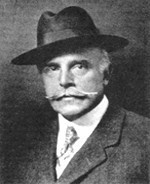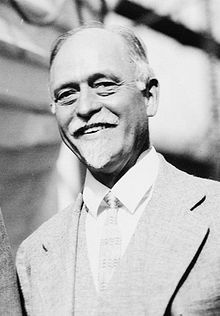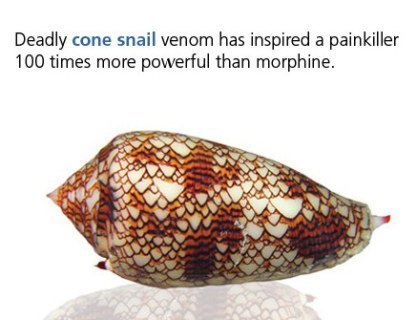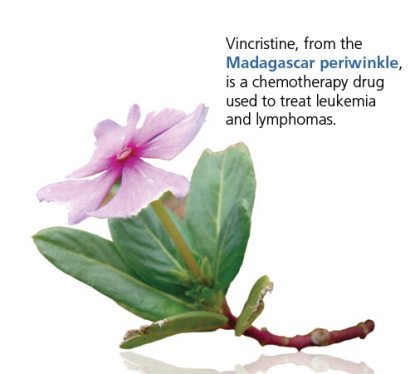Richard Conniff's Blog, page 92
May 1, 2012
Kind Words for Despicable Men (God and White Men–part 3)
For readers today, it is almost impossible to browse through the eugenics literature from before World War II without hearing intimations of Auschwitz in every line. It takes a continual effort to keep in mind that they did not know about the Holocaust then. When one early enthusiast declared that eugenics “is going to be a purifying conflagration some day,” no one understood how horrifically prophetic those words would later sound.
Reading about Irving Fisher, Ellsworth Huntington, and the rest, I felt a predictable sense of loathing: these were despicable men. But in other parts of their lives, even the worst of them was at times admirable, and I felt a queasy sense of liking. This was illogical on a personal level. Their writing was laced with animosity toward the wave of immigrants into the United States after 1890—southern and eastern Europeans (mainly Italians and Jews, respectively), yellow-peril Asians, and the drunken, misbegotten Irish. It was an era when a Harvard anthropologist could lament “the flooding of this country with alien scum.” Fisher spoke of “defectives, delinquents, and dependents.”
Under the pretext of science, the eugenicists were proposing to preserve “Nordic” hegemony by breeding out my own Irish and Italian stock, among others. So why liking? Partly, it’s because the idea of the white Anglo-Saxon gentry prattling about their own superiority has become a stock joke (“Too damned funny, old bean”). Ellsworth Huntington sounds about as dangerous as Henry Higgins in My Fair Lady when he declares: “An Englishman likes to work things out for himself, and is glad when an emergency throws him on his own resources. The Mediterranean and Alpine people, on the contrary, are much more docile, more willing to be led.”
And partly it’s because, having grown up Irish and Italian, I am aware that my people also entertain notions of our magnificence. Other ethnic groups do the same, though they are generally not so foolish, or so accustomed to power, as to issue scientific pronouncements on the topic to the less fortunate. The truth is that all humans favor in-groups, starting with the family, and we disparage those we perceive as outsiders. Treating this as only the outlaw impulse of eugenicists and Nazis is a convenient way of overlooking a hateful tendency in us all.

Madison Grant
These eugenicists also felt disturbingly familiar in other ways. They weren’t sinister characters out of some darkly lighted noir film about Nazi sympathizers, but environmentalists, peace activists, fitness buffs, healthy-living enthusiasts, inventors, and family men. If Madison Grant had not been such an ardent racist and so closely tied to Nazi genocide, he might be remembered today as one of America’s greatest conservationists. “Among his many accomplishments,” writes Jonathan P. Spiro in his recent biography, Defending the Master Race, “Grant preserved the California redwoods, saved the American bison from extinction, founded the Bronx Zoo, fought for strict gun-control laws, built the Bronx River Parkway,” and helped create Glacier, Denali, and Everglades National Parks. (To be continued.)








Blue Ribbons for Human Stock (God and White Men, part 2)
 In the early decades of the twentieth century, eugenics “fell squarely in the mainstream of scientific and popular culture,” according to Yale history professor Daniel Kevles, author of the 1985 book In the Name of Eugenics.Theodore Roosevelt popularized the term “race suicide,” for what he saw as the dwindling of the old Anglo-American stock, and the young Winston Churchill advocated sterilization and labor camps for “mental defectives.” Planned Parenthood founder Margaret Sanger decried the proliferation of “human weeds,” while progressive reformer Havelock Ellis thought that getting the reproductive choices right would require the sexual liberation of women.
In the early decades of the twentieth century, eugenics “fell squarely in the mainstream of scientific and popular culture,” according to Yale history professor Daniel Kevles, author of the 1985 book In the Name of Eugenics.Theodore Roosevelt popularized the term “race suicide,” for what he saw as the dwindling of the old Anglo-American stock, and the young Winston Churchill advocated sterilization and labor camps for “mental defectives.” Planned Parenthood founder Margaret Sanger decried the proliferation of “human weeds,” while progressive reformer Havelock Ellis thought that getting the reproductive choices right would require the sexual liberation of women.
Francis Galton, a cousin of Charles Darwin, had coined the word “eugenics” in 1883 from the Greek for “of good birth.” But it really gained currency after 1900, with the rediscovery of Gregor Mendel’s work describing how different traits are inherited in pea plants—and particularly after researchers demonstrated in 1907 that Mendelian inheritance plays a role in eye color in humans, too.
Eugenicists inferred—incorrectly, as we now know—that single genes, or “unit characters,” could determine feeblemindedness, insanity, alcoholism, and even broad swaths of behavior like criminality. They also believed that society could now use this knowledge to dramatically improve the species. Huntington, the Yale geographer, described this as the fifth “most momentous” discovery in human history, after tools, speech, fire, and writing. For Fisher, likewise, it was the coming of an epoch: “We could make a new human in a hundred years.”
By the late 1920s, 376 American colleges were offering courses in eugenics. The army of enthusiasts included, at various times, the presidents of Yale, Harvard, Stanford, the American Museum of Natural History, and the universities of Michigan, Wisconsin, and California. State fairs also embraced the eugenic cause. Known for celebrating grand champion sows and other masterworks of animal husbandry, they now added a “human stock” section, where competitors vied for the blue ribbon in the “Fitter Families” contest. A traveling display warned, “Some people are born to be a burden on the rest,” above a light that flashed every 15 seconds to indicate that another “$100 of your money” had just gone “for the care of a person with bad heredity.”
To help make their case, the eugenicists developed elaborate genealogies showing how certain “unfit” families had spread their defective “germ plasm”—that is, their genes—through the generations, at terrible cost to society. The true identities of these families were hidden behind fake names. But the genealogies were often fake, too, and the harsh-sounding pseudonyms like Jukes and Kallikak served as an onomatopoeic way of getting people to feel, as Fisher did, “what awful contamination can be saved the race by a wise application of eugenics.”
Genealogies of prominent Yale and Harvard men often served as a bracing and instructive contrast. Fisher looked at the 1,394 descendants of Jonathan Edwards, Class of 1720, and reported that “something like half have been public men or men of great distinction and good influence in the world.” This biologizing of social superiority provoked one skeptic to publish a detailed account in an academic journal of how manic-depressive insanity ran through the families of Boston’s Brahmins.
Yale was “not luminously worse” than others in perpetuating this “farrago of flawed science,” according to Kevles. But it was bad enough. Proponents of eugenics included Yale president James R. Angell, celebrated football coach Walter Camp ’80, primatologist Robert Yerkes, and Yale medical school dean Milton Winternitz. Stewart Paton, who pioneered mental health services for college students during a two-year stint at Yale in the 1920s, was a eugenicist. So was Rabbi Louis L. Mann, a lecturer at Yale, who told an audience at a 1923 birth control conference that, even in ancient times, the wise men of Israel had realized the necessity of checking the multiplication of the unfit.
But though many scholars and statesmen embraced eugenics, none, writes historian Annie L. Cot, “could rival Fisher, whose struggles in the ranks of the eugenic movement were lifelong.”








April 30, 2012
God and White Men at Yale (Part 1)

Irving Fisher
This is a piece I wrote for the Yale Alumni Magazine, about the remarkable role that university played in the eugenics movement of the early twentieth century.
On a sweltering Friday in June 1921, a 54-year-old Yale economics professor named Irving Fisher delivered a major speech at Cold Spring Harbor on Long Island. The pain of the recent war in Europe was still fresh, and Fisher was troubled by the quality of those who had died, and the damage to “the potential fatherhood of the race” by the loss of so many young men “medically selected for fighting but thereby prevented from breeding.”
In light of these losses, the issue, it seemed to Fisher, was that graduates of leading universities were failing to do their reproductive duty: the families “of American men of science” averaged just 2.22 children, versus a national average of 4.66. (Or as he put it, perhaps too lucidly, “The average Harvard graduate is the father of three-fourths of a son and the average Vassar graduate the mother of one-half of a daughter.”) This “race suicide” among “the well-to-do classes means that their places will speedily be taken by the unintelligent, uneducated, and inefficient.”
To prevent that, immigration from certain regions needed to be sharply curtailed, and birth control “extended from the white race to the colored” and to other “undesirable” ethnic and economic groups, ideally under the control of a eugenics committee established to “breed out the unfit and breed in the fit.” Otherwise, “the Nordic race … will vanish or lose its dominance.”
It was strong stuff, and from a seemingly impeccable source. Irving Fisher ’88, ’91PhD, a dapper, balding figure, with a white van dyke beard and rimless eyeglasses, was one of America’s best-known scholars. The New York Times ran long, flattering profiles about his work, and for years the Wall Street Journal published “Fisher’s Weekly Index,” for tracking market prices. The rich and powerful, including congressmen and presidents, sought his advice.
And with good reason: even today, Fisher is widely regarded as the greatest economist America has produced. He devised many of the basic concepts for analyzing the modern financial system and explained them so clearly that, at his death in 1947, the Harvard economics faculty en masse would sign a letter saying, “No American has contributed more to the advancement of his chosen subject.”
But Fisher was also a leading voice of the eugenics movement, which aimed to improve human populations through carefully controlled breeding. The aim, more precisely, was to build up the white northern European population, and discourage all others. This agenda, as it found its way into state laws, would mean evicting other Americans from their homes, depriving them of the ability to have children, and locking them away in institutions.
Fisher didn’t merely lend his reputation to bigotry. He made eugenics a major focus of his life and regarded it as a natural outgrowth of his economics: “national vitality” depended on a productive citizenry, and it was clear to him that healthy living and careful breeding were the best ways to make the citizenry become more productive. To that end, he helped found the Race Betterment Society; was an active member of the Eugenics Research Association, a group of scholars in the field; and served as founding president of the American Eugenics Society, which organized research, lobbying, and propaganda for the movement.
Yale figured prominently in this work. The early meetings of the AES took place in the Manhattan home of an influential friend of Fisher’s from his college years, Madison Grant, Class of 1887. Other university administrators, faculty, and alumni also played an active part, among them the conservationist Gifford Pinchot ’89 and the explorer and geography professor Ellsworth Huntington ’09PhD. The AES later established its headquarters in offices overlooking the New Haven Green, at Elm and Church Streets. In the years leading up to World War II, when it was carefully downplaying the anti-Semitic character of the eugenics program in Nazi Germany, the AES was housed on the Yale campus. The seminal text of the movement was Madison Grant’s 1916 book, The Passing of the Great Race, which influenced Adolf Hitler himself. (To be continued.)








April 9, 2012
New Hope and More Hard Work (A Bitter Pill–Conclusion)
 So where does all this leave drug research from the natural world? Miller, Vederas, and a few small drug companies remain surprisingly optimistic. That's partly because the resource, though rapidly dwindling, is still out there waiting to be studied. Miller estimates that medical researchers have tested only about 60,000 of the 400,000 or so plant species on Earth, and most of those against only a handful of diseases. Extrapolating from the past success rate, he estimates that the plant species still waiting to be studied may contain upwards of 500 new botanical drugs.
So where does all this leave drug research from the natural world? Miller, Vederas, and a few small drug companies remain surprisingly optimistic. That's partly because the resource, though rapidly dwindling, is still out there waiting to be studied. Miller estimates that medical researchers have tested only about 60,000 of the 400,000 or so plant species on Earth, and most of those against only a handful of diseases. Extrapolating from the past success rate, he estimates that the plant species still waiting to be studied may contain upwards of 500 new botanical drugs.
Moreover, new technologies are making it easier to find them, according to Vederas. Automated fractionation can now rapidly break down botanical specimens, thinning out the natural complexity to just three compounds per test well for high throughput screening. Better methods also make it easier to synthesize these compounds, leading this past November to approval of a new breast cancer drug, Halaven, derived from a sponge found on the coast of Japan. Researchers are also learning how to clone and work with individual genes in a plant. At the University of California at Berkeley, for instance, Jay Keasling's laboratory has recently overcome obstacles to transferring plant genes into bacteria and fungi, for synthetic production of the highly effective anti-malarial artemisinin, from the sweet wormwood plant. He says commercial production will begin this Autumn.
At the same time, many of the remarkable biochemical functions attributed to plants and animals are turning out to come not from the organism itself, but from the bacteria and other microbes around it. Instead of having to plant fields or cut down forests to get medicinal compounds, drug companies may soon be able to have these microbes brew them for us in fermentation vats. Such improvements could lead to what Miller calls a "second renaissance" in natural products drug development. Ethnobotanist Mark Plotkin, an early proponent of bioprospecting, adds, "Just because capitalism doesn't get something right, doesn't mean it's not there. We know that well these days. You need to look everywhere, but I think the sweet spot lies somewhere between the medicine man and the microchip."
This is not to say that blockbuster $1 billion-a-year drugs are ever going to produce a steady flow of cash for habitat preservation. Big drug discoveries "are few and far between," says George Frisvold, an agricultural and resource economist at the University of Arizona, "and there's a long lag" from discovery to marketplace stardom. Banking on that income is like staking your future on your kid's chances of becoming the most valuable player in the NBA. For instance, taxol, originally discovered in 1961 in the bark of a Pacific yew tree in Washington State, now earns $1.7 billion a year and saves the lives of thousands of women with breast, ovarian and other cancers. If Washington officials back then had somehow negotiated a one percent royalty agreement, they might now be cashing a check for $17 million a year. But it took 30 years for the drug to reach the marketplace, and it often looked as if it might never get there at all. Meanwhile, would the distant chance that this might happen at some unknown time in the future have motivated the state to protect a single extra acre of habitat, or shut down part of its lucrative logging industry?
Governments everywhere "are continuously going to face all kinds of current pressures to convert the land," says Frisvold, and the only thing likely to outweigh those pressures is some other "immediate tangible benefit." Bioprospecting deals might add up to such a tangible benefit—but only if also combined with ecotourism, sale of green products, and fees for carbon storage, flood control, or other services natural habitats provide. Frisvold believes conservationists would get better results working to attack the pressures to convert the land—by fighting subsidies that encourage deforestation, and by pushing land reform so small farmers have a place to feed their families other than by hacking fields out of the forest.
That is, conservation is always going to be hard, slow work, and more often than not, with a major headache at the end of the day. You can take two aspirin—or the latest miracle drug—and go to bed.
But don't expect everything to be better in the morning.








April 8, 2012
Nature Isn’t Simple (A Bitter Pill-Part 4)
 A plant sample—even something as basic as coffee or tea–may contain thousands of compounds. In the lab, chemists “fractionated” plant samples, breaking them down into crude extracts. But they still ended up with hundreds of compounds in each of their 1536 test wells. “This is where the wheels fell off of this thing,” says Paul Armond, a plant cell biologist who spent 30 years in drug development at Pfizer. “High-throughput screeners hated these samples. They didn’t want to have anything to do with them because even if you got a hit in one of these fractionated samples, you didn’t know which of the hundred compounds in the test well was the active one.” A high-throughput screener’s job is to test as many compounds and get as many hits as possible, and natural compounds just seemed to clog the pipeline.
A plant sample—even something as basic as coffee or tea–may contain thousands of compounds. In the lab, chemists “fractionated” plant samples, breaking them down into crude extracts. But they still ended up with hundreds of compounds in each of their 1536 test wells. “This is where the wheels fell off of this thing,” says Paul Armond, a plant cell biologist who spent 30 years in drug development at Pfizer. “High-throughput screeners hated these samples. They didn’t want to have anything to do with them because even if you got a hit in one of these fractionated samples, you didn’t know which of the hundred compounds in the test well was the active one.” A high-throughput screener’s job is to test as many compounds and get as many hits as possible, and natural compounds just seemed to clog the pipeline.
Even if they managed to isolate an active compound from a plant, says Armond, “it would be, from the organic chemists’ point of view, some ugly compound, this big, giant molecule that no chemist could ever possibly synthesize. They‘d said, ‘What am I supposed to do with this?’” When a compound seems promising, the usual next step is to “add things to it, take things away, rearrange things, and find where the important parts of the molecule are and where the not-so-important parts are.” Through the magic of combinatorial chemistry, researchers can target the molecule more carefully, or weed out unwanted side effects. But if a compound from a natural product is too complex to synthesize in the first place, “then you can’t do any of those things.”
One final obstacle made natural products problematic: Getting enough of the desired compound can be difficult because living things normally vary by season or site—and sometimes disappear completely. It happened to another NCI research team in the late 1980s. When they got a promising hit for an anti-HIV compound from a tree in Sarawak, Malaysia, researchers hurried back to collect more samples. But someone had cut down the only known tree. After a frantic search, the only other evidence of the species they could find was a 100-year-old specimen in the Singapore Botanical Garden. Chemists eventually figured out how to synthesize the compound, and Calanolide A is now an experimental treatment for HIV patients.
By contrast, products of combinatorial chemistry are wonderfully simple. That may, however, be their only advantage: The combinatorial compound libraries researchers worked with in the early years were so badly flawed, according to Christopher Lipinski, a drug development guru who spent most of his career at Pfizer, that the industry would have been more productive if it had “stored them in giant dumpsters.” Even now, after tens of billions of dollars and 25 years of research, combinatorial chemistry and high-throughput screening have put only a single completely new FDA-approved compound into the marketplace. The new methodologies can thus seem a bit like the drunk who searches for his keys under a lamppost, not because that’s where he dropped them, but because the light is better there.
(to be continued)

Nature Isn't Simple (A Bitter Pill-Part 4)
 A plant sample—even something as basic as coffee or tea–may contain thousands of compounds. In the lab, chemists "fractionated" plant samples, breaking them down into crude extracts. But they still ended up with hundreds of compounds in each of their 1536 test wells. "This is where the wheels fell off of this thing," says Paul Armond, a plant cell biologist who spent 30 years in drug development at Pfizer. "High-throughput screeners hated these samples. They didn't want to have anything to do with them because even if you got a hit in one of these fractionated samples, you didn't know which of the hundred compounds in the test well was the active one." A high-throughput screener's job is to test as many compounds and get as many hits as possible, and natural compounds just seemed to clog the pipeline.
A plant sample—even something as basic as coffee or tea–may contain thousands of compounds. In the lab, chemists "fractionated" plant samples, breaking them down into crude extracts. But they still ended up with hundreds of compounds in each of their 1536 test wells. "This is where the wheels fell off of this thing," says Paul Armond, a plant cell biologist who spent 30 years in drug development at Pfizer. "High-throughput screeners hated these samples. They didn't want to have anything to do with them because even if you got a hit in one of these fractionated samples, you didn't know which of the hundred compounds in the test well was the active one." A high-throughput screener's job is to test as many compounds and get as many hits as possible, and natural compounds just seemed to clog the pipeline.
Even if they managed to isolate an active compound from a plant, says Armond, "it would be, from the organic chemists' point of view, some ugly compound, this big, giant molecule that no chemist could ever possibly synthesize. They'd said, 'What am I supposed to do with this?'" When a compound seems promising, the usual next step is to "add things to it, take things away, rearrange things, and find where the important parts of the molecule are and where the not-so-important parts are." Through the magic of combinatorial chemistry, researchers can target the molecule more carefully, or weed out unwanted side effects. But if a compound from a natural product is too complex to synthesize in the first place, "then you can't do any of those things."
One final obstacle made natural products problematic: Getting enough of the desired compound can be difficult because living things normally vary by season or site—and sometimes disappear completely. It happened to another NCI research team in the late 1980s. When they got a promising hit for an anti-HIV compound from a tree in Sarawak, Malaysia, researchers hurried back to collect more samples. But someone had cut down the only known tree. After a frantic search, the only other evidence of the species they could find was a 100-year-old specimen in the Singapore Botanical Garden. Chemists eventually figured out how to synthesize the compound, and Calanolide A is now an experimental treatment for HIV patients.
By contrast, products of combinatorial chemistry are wonderfully simple. That may, however, be their only advantage: The combinatorial compound libraries researchers worked with in the early years were so badly flawed, according to Christopher Lipinski, a drug development guru who spent most of his career at Pfizer, that the industry would have been more productive if it had "stored them in giant dumpsters." Even now, after tens of billions of dollars and 25 years of research, combinatorial chemistry and high-throughput screening have put only a single completely new FDA-approved compound into the marketplace. The new methodologies can thus seem a bit like the drunk who searches for his keys under a lamppost, not because that's where he dropped them, but because the light is better there.
(to be continued)

April 7, 2012
Horror Stories and High Tech (A Bitter Pill–Part 3)
 So each new negotiation starts from scratch and can entail months or even years of "significant legal and travel expense, all before a single collection is made," says Miller. The uncertainty of these negotiations "may be more of an impediment to pharmaceutical companies," he suggests, "than the actual commitment to share potential profits."
So each new negotiation starts from scratch and can entail months or even years of "significant legal and travel expense, all before a single collection is made," says Miller. The uncertainty of these negotiations "may be more of an impediment to pharmaceutical companies," he suggests, "than the actual commitment to share potential profits."
Horror stories abound: In the late 1980s, a U.S. National Cancer Institute team was working in the West African nation of Cameroon on a compound that looked like the cure for AIDs. "This was a plant that was still eating research dollars at an enormous rate, it wasn't making any money, and, man, the Cameroonians were all wanting to buy themselves new Mercedes." Though the researchers had an access agreement with one government ministry, "about five other ministries stood up and said, 'Oh you should have signed that with us.'" Then they bickered. Even if the compound had proved to be the cure (it turned out to be too toxic), "I'm not sure we would have been able to work on it," says Miller, "because the Cameroonians put such tight clamps on it."
But drug companies also botched their bioprospecting efforts through a combination of financial and technological hubris, critics say. The financial side is a familiar story of senior executives focusing on quarterly growth at the expense of science. Getting a new drug to market, says John C. Vederas, a medicinal chemist at the University of Alberta, "requires a lot of creativity and intellectual input and study and time and money"—on average ten years and $1 billion worth of research. Boosting revenues by buying up other large drug companies can look like a quicker way to keep Wall Street happy. And with each round of consolidation, company leaders "basically layoff employees, close research and development units that have a long record of being successful, and buy technologies that look promising from smaller companies."
Beginning in the late 1980s, big drug companies also increasingly diverted their research dollars from natural products to combinatorial chemistry and high-throughput screening. That is, they turned to automated methods to bang out large libraries of closely related synthetic compounds. Then they sorted out the biologically active ones by running these compounds through a device the size of a hardcover book, with 1536 little plastic wells, each containing a different bioassay. It's a "brute force method," says Vederas, and can take a million tries to produce one promising lead. But the numbers may still seem to work because automation makes those million tries relatively cheap.
Natural products didn't fit the new technology.
(to be continued)

April 6, 2012
Glories of the Green Medicine Chest (Bitter Pill–Part 2)
 The track record for green medicines had previously been almost miraculous. Though neither doctors nor patients generally realize it, about half the drugs they depend on come directly or indirectly from the natural world. The list starts with aspirin (now produced synthetically but first found in the bark of the willow tree) and includes all the antibiotics, almost all the anticancer drugs, and many of the leading cardiovascular medicines, among others.
The track record for green medicines had previously been almost miraculous. Though neither doctors nor patients generally realize it, about half the drugs they depend on come directly or indirectly from the natural world. The list starts with aspirin (now produced synthetically but first found in the bark of the willow tree) and includes all the antibiotics, almost all the anticancer drugs, and many of the leading cardiovascular medicines, among others.
The medicine chest is packed with stories of the most unlikely species transformed ingeniously into lifesavers. Gila monster saliva, for instance, might seem to be worth less than spit. But a hormone in the saliva has become the model for a drug used to treat type 2 diabetes, an epidemic disease that now afflicts 26 million Americans (with another 79 million considered prediabetic). Cone snails deep in the Indo-Pacific prey on fish by jabbing them with a venom toxic enough to kill a person. But a compound in that venom is now a painkiller that's 1,000 times more effective than morphine, without being addictive.
At times the list of past discoveries from the natural world can seem like a one-upmanship contest, with each new product even more improbable than the one before: The basis for the entire class of cholesterol-lowering drugs called statins? A fungus from an orange peel. The standard tool for testing the purity of high tech medical devices? An extract from the blood of horseshoe crabs. The key ingredient in every DNA cloning and sequencing procedure in the world? A bacterium fished out of the mud at a hot spring in Yellowstone National Park (which, like other habitats, has not shared in the profits).
One possible reason the discovery process has stumbled lately is that government agencies (including the U.S. National Park Service) have become far more aggressive about negotiating access and benefit-sharing terms with researchers. Particularly in the developing world, these negotiations tend to be shaped by resentment over past "biopiracy" and uncertainty about fair market value for access to genetic resources.
(to be continued)








How The Bioprospecting Bonanza Went Bust (A Bitter Pill–Part 1)
This is a cover story I wrote for the spring issue of Conservation Magazine:
Twenty years ago this past October, environmentalists around the world celebrated a landmark deal between a major drug company, Merck, and Costa Rica's National Biodiversity Institute, INBio. Until then, the standard practice had been for drug companies to collect biological specimens anywhere they wanted, ship them home to study, and (if they were very lucky) develop one or two of them into miracle drugs—all without the source country ever being aware of it. But instead, Merck was now paying $1.1 million up front for bioprospecting rights and promising a royalty from any drugs that resulted.
For environmentalists, the best part of the deal was that a share of any payment would go to protect the habitat itself. The rest of the world was furiously demolishing forests and wetlands, converting them to short-term cash crops like soybeans, hamburgers, and shrimp. But suddenly, a Fortune 500 company was putting money behind the idea that nature intact might have a higher value. One economic analysis even put a number on it: bioprospecting for drugs would increase the value of some habitats by more than $3,600 an acre.
Other economists warned the added value was likely to be no more than $25, but the dream of earning "green gold" by tapping "the mother lode in Mother Nature" quickly spread worldwide. In Rio de Janeiro in June 1992, the Convention on Biological Diversity for the first time recognized the need to preserve a multitude of habitats and species as a matter of both international law and the good of humanity. It also stipulated that a fair share of the benefits should go to the countries where this diversity flourishes. It seemed like the beginning of a new era in drug discovery, international development, and habitat preservation alike.
It was also too good to be true. In 2008, Merck quietly abandoned its search for new drugs from the natural world, shifting its attention to synthetic compounds and vaccines instead. Then last year, as if to mark the anniversary of its Costa Rican folly, the company gave away its entire library of natural compounds—100,000 extracts representing 60 percent of all known plant genera, ready to be screened for the next big miracle drug. And it wasn't just Merck: Pfizer, Eli Lilly, Bristol-Myers Squibb, and most other Big Pharma companies have also abandoned the direct search for drugs from the natural world. "We lived under the assumption that the rainforest was full of medicinally useful compounds like vincristine," says James Miller, vice president for science at the New York Botanical Garden. Derived from a plant in Madagascar, the rosy periwinkle, that drug had turned leukemia and lymphoma into survivable diseases. "And nobody found the next vincristine."
Miller holds out hope that drugs from the natural world may yet have their day. But bioprospecting since the Merck deal has so far failed to produce a single new blockbuster drug. Instead of the widely anticipated golden age of drug discovery, new drug approvals over the past decade have sunk to a 25-year low. Nor has any major drug contributed revenues to the preservation of the habitat from which it was originally derived. On the contrary the Convention on International Trade in Endangered Species says 64 plant species are currently threatened by overharvesting for medicinal uses.
What went wrong? (to be continued)








March 17, 2012
Scourge of Africa (Ivory Conclusion)
 The trade eliminated elephants from vast swaths of East Africa. "People talk as if the ivory of Africa were inexhaustible," an English explorer wrote in the 1870s. "Let me simply mention a fact. In my sojourn of fourteen months, during which I passed over an immense area of the Great Lakes region, I never once saw a single elephant." But back in Connecticut, it was easy to believe otherwise. "Although fifty thousand animals are annually slain to meet the demands throughout the world for ivory," a newspaper reported, in a profile of Comstock, Cheney & Co., "there appears to be little danger of decimation, owing to the fact that, in the wilds in the backcountry, hundreds of miles from civilization, elephants are as numerous as flies."
The trade eliminated elephants from vast swaths of East Africa. "People talk as if the ivory of Africa were inexhaustible," an English explorer wrote in the 1870s. "Let me simply mention a fact. In my sojourn of fourteen months, during which I passed over an immense area of the Great Lakes region, I never once saw a single elephant." But back in Connecticut, it was easy to believe otherwise. "Although fifty thousand animals are annually slain to meet the demands throughout the world for ivory," a newspaper reported, in a profile of Comstock, Cheney & Co., "there appears to be little danger of decimation, owing to the fact that, in the wilds in the backcountry, hundreds of miles from civilization, elephants are as numerous as flies."
Ernst Moore's book Ivory—Scourge of Africa was a remarkably frank account of how his business had devastated the continent. But when he came to "the question of whether or not the killing for ivory must go on…until the elephant is exterminated throughout the whole continent of Africa," he could only answer with another question: "Can we find a substitute for ivory that will give us equal grace, delight, and satisfaction?" Moore thought no such substitute existed, and that the killing would continue. Even today some pianists insist on ivory, saying sophisticated modern plastics do not meet their needs.
What ultimately saved the remaining elephants wasn't conservationist thinking. On the contrary, it was the decline in demand early in the twentieth century as the phonograph, movies, and other modern amusements began to draw people away from their pianos.
###
Reading about the old ivory trade in the Connecticut River Valley, the wealthy people in Asia who are now driving the demand for ivory might well think: "The Americans were even worse in their day. Now it's our turn." But it's no longer possible to plead ignorance about the effects of the ivory trade, and the moral complications are all too obvious: News reports continually show us the butchered elephants, and the game rangers and poachers who have died over their bodies. And what if the last wild elephants vanish from Africa, as now seems possible? The children and grandchildren of the people who are making it happen will look back on them in horror and dismay. That's the real lesson of the Connecticut River Valley. Those precious and beautifully-carved ivory knickknacks will survive not as symbols of status, but of shame.












